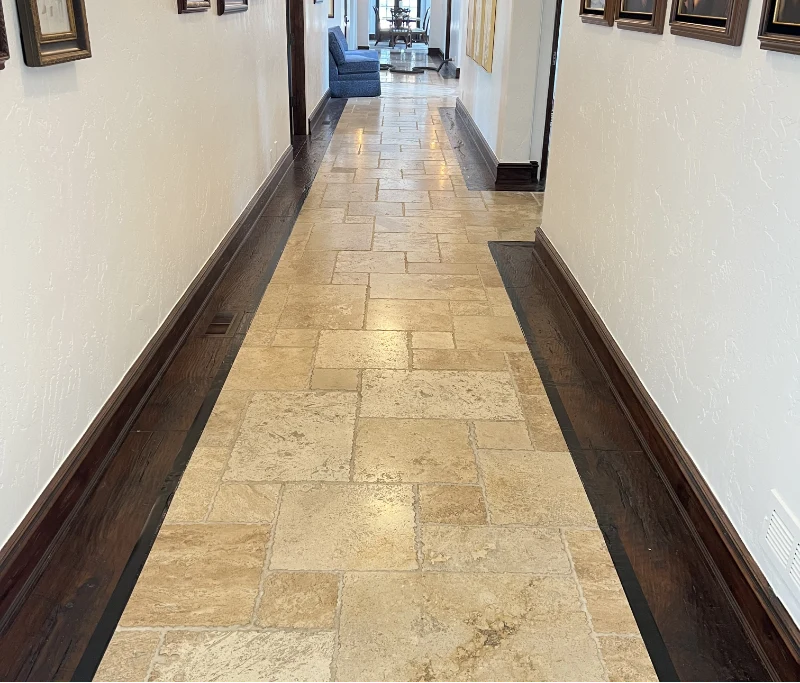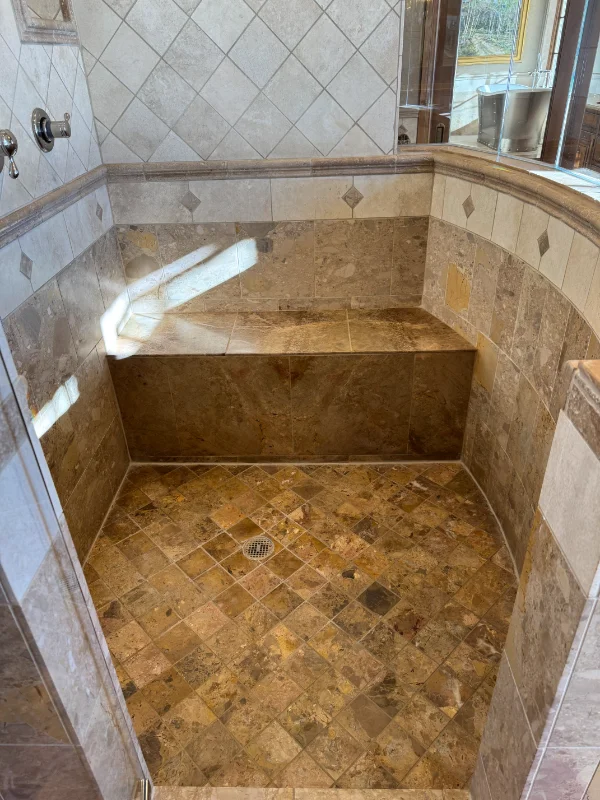Bring Your Stone to Life
Time and wear can make even the most brilliant stone appear lackluster without proper care and maintenance. Whether it’s a loss of shine or significant staining, Stone Masters of Idaho can help bring your stone back to life giving it a shine you can be proud of.
There are a variety of stone issues a home or business owner can face. Stone Masters of Idaho wants to help you prevent any stone issues you may face. From cracking and etching to losing shine and yellowing, Stone Masters of Idaho can help!
The Most Common Stone Issues
Learn more about some of the most common stone issues below.
- Cracks
There are a number of ways that cracks can form in stones. Anything from the major causes such as earthquakes, down to the minor and slower causes like settling earth or whatever surfaces lie beneath the stone in question.
Cracks can sometimes be fixed by simply filling the stone with a color-matched polyester or epoxy. In items such as concrete, it can often be so severe that you have to re-pour the affected area to fully restore the section.
Before fixing a problem, especially a crack in an expensive and exotic stone, you should try to find the source or the root of the issue. If you just “band-aid” the issue, then you may find yourself shelling out quite a bit of money to constantly fix the same issue over and over again.
- Efflorescence
Efflorescence is a condition of the stone that causes a sort of white powdery residue to appear on the surface of your stone. While the condition is fairly common in new stone installations, it is also possible in existing installations. However, don’t fret! It is preventable and treatable.
The primary cause of efflorescence is typically due to the stone being exposed to large quantities of water in a concentrated area. This can be puddles that sit in one spot for a while untouched or something large scale like a flood. The powder-like substance that appears is actually a mineral salt from the setting bed.
While the process of removing efflorescence can be done by you, you may need to consult a professional in more extreme cases such as flooding and widespread water damage. Stone Masters Of Idaho has the knowledge and expertise to assist in jobs both big and small. Simply contact us for more information.
- Etching
Etching occurs when something acidic, usually a cleaner with acidic properties is spilled on marble. This typically creates a dull spot in the stone.
Stones such as marble and limestone specifically etch extremely easy. Since granite is a harder and denser stone, it tends to not etch as easily as the others listed above.
So how can you prevent etching? It’s simple and hard all at the same time. You should know your stone first off, and what kind of cleaners are compatible with it. If acidic cleaners cause etching, then the logical solution is to NOT use acidic based cleansers. Unfortunately, it’s not as simple as cleaners though. Foods can also contain high concentrations of acid as well. Therefore you should keep things like chopping blocks, cutting boards and plates to chop things like tomatoes, oranges etc.
- Loss Of Shine
As with anything that has a shine, you must keep care of it to maintain that glossy mirror-like look. The worst enemy of shine is simply time. Over time, factors such as high traffic, day to day cleaning and just general exposure to the elements will take away that shine that we so love in our precious stones. This is especially true for Marble since it is actually much softer than Granite. Again everyday traffic down to the most simple of elements can and will cause this.
Think of your precious stone like your car. You wouldn’t want to throw mud and dirt all over it after you washed and waxed, nor would you want to put anything abrasive that would dull your countertops shine.
If you apply basic common sense and take the time to clean the everyday messes, you will find that your shine will last a bit longer and look a bit brighter over time. While these precious stones are strong and beautiful, they will always need a bit more care than standard linoleum or vinyl. Just remember that and you’ll do just fine with that shine!
- Spalling, Flaking & Pitting
Spalling is the process in which a stone develops small pits or when the surface of the stone begins popping off. If this happens, you have a real problem!
Much like efflorescence, spalling, flaking, and pitting all happen due to large concentrations of liquid, more specifically water. De-Icing products that are salt based can also have the effect that water has, believe it or not!
Mineral salts are the main cause for spalling and pitting just like efflorescence. They actually end up settling underneath the surface of the stone which causes a pressure build-up and therefore the stone spalls, flakes and pits. Once this happens to your stone, it is virtually impossible to reverse the process. You might be able to prolong the process, but it is recommended that you replace the damaged stone and take care to not let that happen again.
- Staining
You don’t need to be told that in a kitchen you will run across many different types of stains. That’s why staining falls under one of the top stone issues. Everything from food, drinks, ink, oil, and rust will stain stones, and especially marble. As with any stain, you should always clean the area off immediately to avoid potential problems that can be both costly and time-consuming to fix.
The best thing to do is to blot the stained area with a dry paper towel to soak the excess liquid or material. This will ensure that you don’t spread the area of effect.
There are of course far more ways to clean and maintain. There are a lot of methods to cleaning and preventing stains, but perhaps the best one is and the most common is applying a good quality penetrating sealer. This of course usually requires someone with expertise and/or knowledge of the process. Contact us for more information!
- Uneven Tile-Lippage
Have you ever walked into a bathroom, entry-way or a kitchen and noticed that the tiles are uneven? If so, then you know exactly what tile-lippage is. To put it basically, one edge of the tile is higher than the other. Lippage is caused by poor installation 99.99% of the time. The other percentage could be caused by shifting surfaces underneath the stone that you’re dealing with.
If the lippage on the gap is higher than the width of a nickel, then by the standards of all professionals within the industry it is considered excessive and will need the attention of a professional to repair the damaged surface.
Repair consists typically of grinding down the heightened area to flatten to the rest of the surface. More severe cases can mean an outright replacement of the affected tiles or stones.
- Yellowing
Yellowing is a very common occurrence in stones. Factors such as age, dirt, and grime all play a strategic role in causing this issue. Usually, the simple things like dirt and grime from everyday usage or traffic will cause a dull yellowish dingy look. Other more unusual causes of yellowing can be caused by certain waxes or coatings (sometimes referred to as “sealers”). The yellowing phenomenon is caused by a process called “oxidation”. The natural irons within the stones oxidize and causes the problem. You will find yellowing in most all stones, but more often than not you’ll see it in white marble. Obviously, anything white is more prone to showing any color other than itself, so special care should be taken as a preventative measure.
There are two scenarios for fixing the yellowing. The first is if the stone is yellowing as a result of waxes or dirt and grime build up, then you need to use a good alkaline cleaner or wax stripper as used by professionals. The second is if the yellowing is caused by age or iron oxidation. If that is the case, then you can either live with it or replace the stone altogether.

